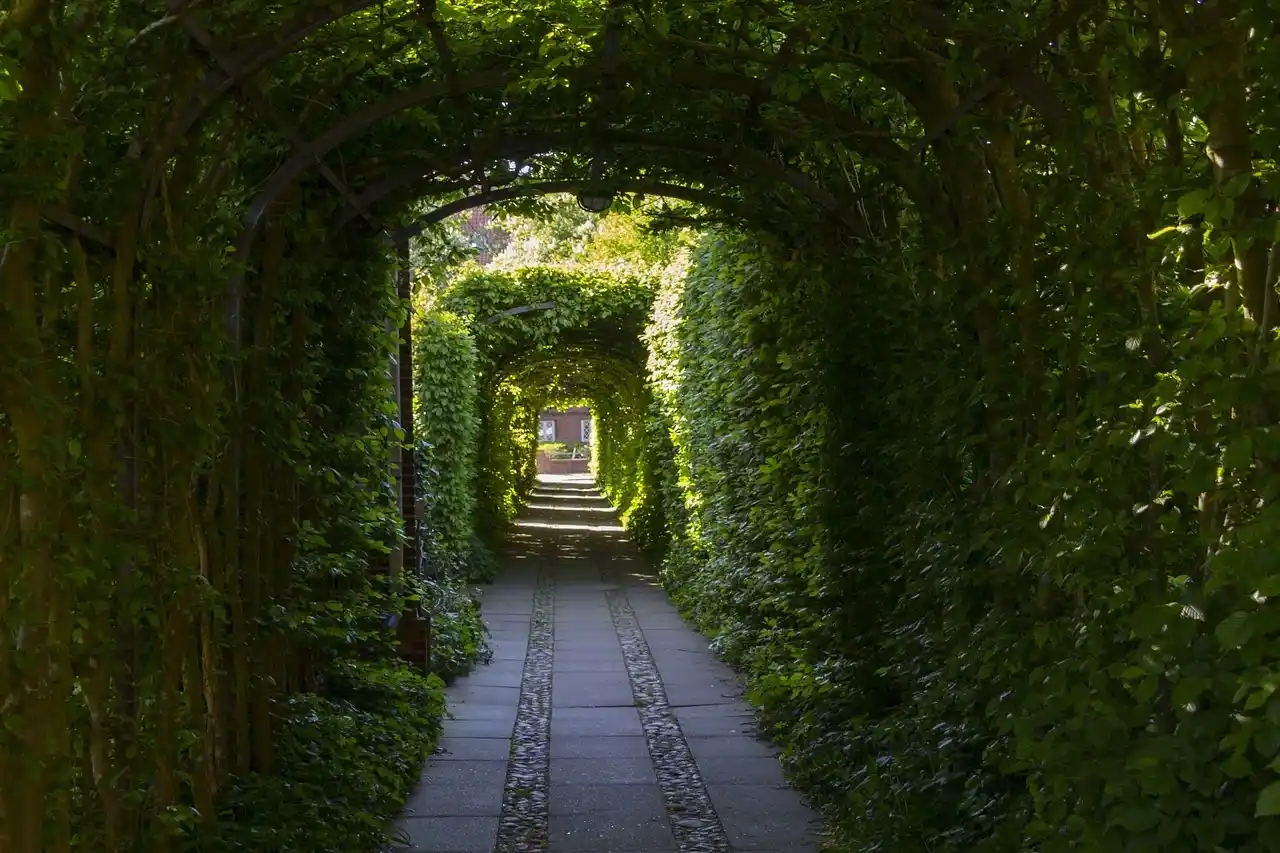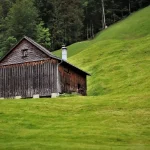A garden gate is more than just an entry point to your yard; it’s the first impression of your personal green space. Whether your garden is a lush retreat or a minimalist escape, the gate should seamlessly blend function and aesthetics. Designing a garden gate that stands out while meeting your practical needs can transform your garden from ordinary to extraordinary.
In this guide, we’ll explore how to create the perfect garden gate, from choosing the right materials to adding decorative touches. We’ll also share personal anecdotes, expert insights, and unique tips to help you design a gate that reflects your style and enhances your garden’s beauty.
Table of Contents
ToggleFunction Meets Form
A garden gate should be both functional and beautiful. It needs to provide security, privacy, and easy access while complementing your garden’s overall design.
Jamie Dugan, a renowned landscape designer, says, “A well-designed garden gate should be both functional and aesthetically pleasing. It should seamlessly blend with your garden style while providing a clear entry point.”
Personal Anecdote: When I was redesigning my garden, I wanted a gate that would keep my dog in while blending with the overall theme. I found a sturdy wooden gate with an intricate lattice design that matched my garden’s rustic charm. It was the perfect combination of style and practicality.
Material Matters
The material you choose for your garden gate significantly impacts its look, durability, and maintenance needs. Here’s a breakdown of the most popular options:
1. Wooden Gates
Wooden gates bring a timeless, natural look to your garden. They can be painted or stained to match your garden decor. However, wood requires regular maintenance to prevent rot and weather damage.
Personal Anecdote: I remember painting my wooden gate every couple of years. The fresh coat of paint not only protected the wood but also gave my garden a fresh, updated look.
2. Wrought Iron Gates
Wrought iron gates are durable and add a touch of sophistication. They can be designed with intricate patterns to enhance your garden’s elegance. On the downside, they might require occasional rust prevention treatments.
Personal Anecdote: My neighbor’s wrought iron gate, adorned with beautiful scrollwork, always catches my eye. It’s a piece of art that adds character to their garden.
3. PVC Gates
PVC gates are a modern, low-maintenance option. They are weather-resistant and come in various designs, offering both functionality and style.
Personal Anecdote: When we moved into a new house, we chose a PVC gate for our garden. It required minimal upkeep and still looked great years later.
Welcome With Height
The height of your garden gate can influence the ambiance and functionality of your garden.
Douglas Friedman, a landscape architect, suggests, “Consider the height of your gate. A taller gate creates a sense of enclosure and privacy, while a shorter one offers a more open and inviting feel.”
Personal Anecdote: We installed a tall gate at the back of our garden to create a private nook, perfect for quiet evenings. It’s become my favorite spot to unwind after a long day.
Embrace the Details
Small decorative elements can make your garden gate stand out and reflect your personality.
Francine Makrinos, a garden writer for Better Homes and Gardens, says, “Don’t neglect the details! Decorative elements like finials, arched tops, or climbing vines can personalize your gate and add a touch of charm to your garden entrance.”
Decorative Elements
Adding decorative elements can elevate your gate’s design. For example, finials on a wrought iron gate or an arched top on a wooden gate can add elegance.
Personal Anecdote: When I was sprucing up my garden, I added some whimsical iron butterflies to the top of our gate. These small details made a big difference and always get compliments from visitors.
Climbing Vines
Incorporating nature into your gate design can enhance its beauty. Climbing vines, such as roses or clematis, can soften the structure and blend it into the garden.
Personal Anecdote: I planted clematis near our gate, and over the years, it grew to create a beautiful, natural archway. It’s now one of the most photographed spots in our garden.
Safety First, Especially with Pets
If you have pets, your garden gate needs to be both secure and pet-friendly.
The Spruce, a home improvement website, advises, “If you have pets, ensure your gate has a secure latch and consider adding a smaller pet door for easy access.”
Secure Latch
A secure latch is essential for keeping your garden secure. Opt for a latch that is easy for you to open but difficult for animals to tamper with.
Personal Anecdote: When our dog started figuring out how to open the simple latch, we upgraded to a more secure option that required a bit more dexterity, ensuring our pup stayed safely inside the garden.
Pet Door
If your pet loves to roam, a pet door can be a convenient addition. It allows your pet to enter and exit without you having to open the gate every time.
Personal Anecdote: Adding a pet door to our gate was a game-changer, especially during busy mornings. Our dog could come and go as she pleased, and we didn’t have to worry about her escaping.
Think About Maintenance
Choosing a gate material and design that fits your lifestyle is crucial. Some materials require more upkeep than others.
Sunset Magazine advises, “Choose a gate material and design that requires minimal maintenance to fit your lifestyle. Regularly stain or paint wooden gates, while metal gates may need occasional rust prevention.”
Maintenance Tips
- Wooden Gates: Stain or paint every few years to protect against weather damage.
- Wrought Iron Gates: Apply rust prevention treatments as needed.
- PVC Gates: Clean occasionally to maintain their appearance.
Personal Anecdote: From my own experience, maintaining a wooden gate can be a labor of love. I enjoy spending a sunny afternoon sanding and painting our gate. It’s a rewarding task that keeps our garden looking fresh and well-cared-for.
Unique Insights: The Psychology of Garden Gates
Research published in ScienceDirect highlights how garden gate design can shape the perception of a garden space, creating a sense of welcome or privacy. A well-designed gate can make your garden feel more inviting or secure, depending on the intended ambiance.
Insight: A tall, solid gate can create a sense of mystery and privacy, while a shorter, open gate can feel more welcoming and friendly.
Historical and Sustainable Trends
Historical Analysis
A study on ResearchGate explores the evolution of garden gate design, from traditional styles to modern trends. Understanding the historical context can inspire your design choices, blending the best of both worlds.
Sustainable Materials
Sustainable design principles, discussed on ScienceDirect, emphasize the use of recycled materials and eco-friendly construction techniques for garden gates. This approach not only benefits the environment but also adds a unique, responsible touch to your garden.
Insight: Consider using reclaimed wood or recycled metal for your gate to create a sustainable and one-of-a-kind design.
Final Thoughts
Designing a garden gate that blends function and aesthetics is an art. By considering the material, height, decorative details, and maintenance needs, you can create a gate that enhances your garden’s beauty and meets your practical needs.
Remember to incorporate personal touches and choose elements that reflect your style. Whether it’s the whimsical iron butterflies on my gate or the climbing vines that form a natural arch, these details make your garden gate uniquely yours.
So, take your time, explore your options, and design a gate that welcomes you and your guests into your green haven with style and grace.
Share via:




